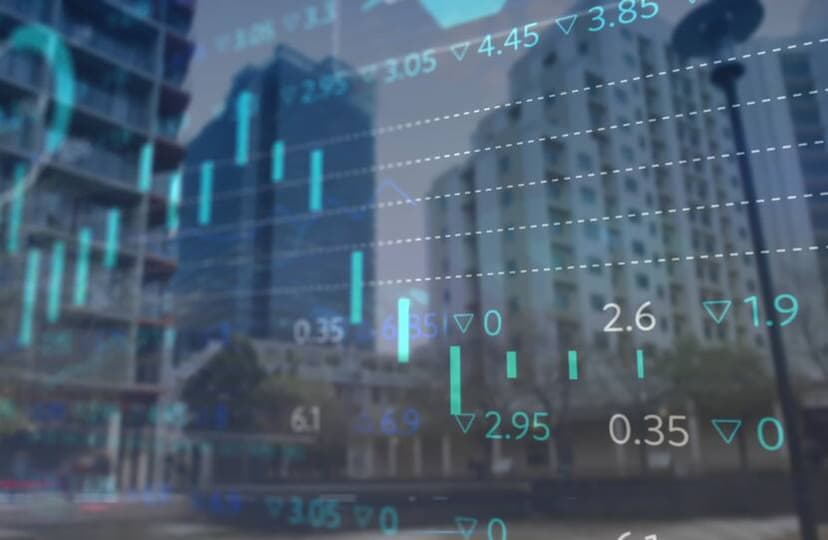Leveraged Finance Asset Allocation Insights: Upside Remains After Performance Bounces Back

Steven Oh, CFA
Global Head of Credit and Fixed Income, Co-Head of Leveraged Finance

John Yovanovic, CFA
Co-Head of Leveraged Finance

Kevin Wolfson
Portfolio Manager, US Leveraged Loans and CLO Management

Laila Kollmorgen, CFA
Global Head of CLO Tranche Investments, Portfolio Manager

Jeremy H. Burton, CFA
Portfolio Manager, US High Yield and Leveraged Loans

Andrew Karlsberg, CFA
Portfolio Risk Manager and Investment Strategist, Leveraged Finance

Jonathan Kramer, CFA
Fixed Income Product Specialist, Leveraged Finance

Evan Burke
Assistant Portfolio Manager, US Leveraged Loans

Komal Shahzad, CFA
CLO Tranche Analyst
The credit market has erased nearly all of its year-to-date weakness and we expect further spread compression, with upside potential for high yield bonds, bank loans, and collateralized loan obligation (CLO) tranches alike. That said, floating-rate asset classes have a marginal edge in the current rate environment.
We expect positive, carry-based total returns for high yield bonds (but muted excess returns) and maintain a neutral portfolio stance following recent spread tightening, favoring US dollar-denominated developed markets over emerging markets and Europe debt. We believe defaults could bleed a bit higher this year versus 2024 given the softer outlook.
Improved forecasts for bank loan carry should compensate investors for increased uncertainty regarding issuer fundamentals in the near to medium term. Distressed activity could tick up in sectors with direct exposure to tariffs, but we expect broader measures of distress to remain relatively stable outside of a sharper downturn.
Year-to-date CLO new issuance is hovering around 2024 levels, and after outflows in April, we’ve begun to see inflows into CLO ETFs (mostly into AAAs). We’ve also witnessed renewed demand from US and Japanese banks in the primary market and strong demand for CLO mezzanine tranches across insurers, money managers, and hedge funds, which is helping to stabilize spreads.

Performance among leveraged finance asset classes has been volatile in the second quarter, though credit spreads have tightened dramatically from April’s wides, and the primary market is coming back to life. Heightened volatility and uncertainty dominated the market in April on the back of the Trump administration’s 2 April tariff announcements, which raised fears of a more severe economic downturn. This led to the sharpest spike in volatility since the Federal Reserve began raising rates in March 2022. In just a few days, high yield bond spreads widened roughly 120 basis points (bps) and US equities fell over 12%. Just a week after the initial announcements, the administration announced a 90-day pause on tariff rates above 10% for all countries except China, and spreads rallied alongside this de-escalation of the global trade war.
The Commerce Department reported a 0.3% contraction in US GDP in the first quarter, adjusted for seasonal factors and inflation. The report indicated that import front-loading outweighed inventory accumulation and final sales. The headline GDP number likely overstates the weakness of the economy, as domestic final sales increased 2.3%, and employment and industrial production have also held up. Meanwhile, March’s Personal Consumption Expenditures (PCE) inflation report showed a firm sequential rise of 3.5% over the past three months, which should keep the Fed on hold unless and until the labor market weakens more dramatically.
Fundamentals for leveraged finance issuers remain robust. More companies are beating than missing estimates thus far in the earnings season, with help from a supportive pre-tariff stocking trend. However, more companies are now also guiding down than guiding up, which is consistent with the heightened trade uncertainty. As recession concerns abate, the credit market has erased nearly all of its year-to-date weakness. We expect further spread compression and believe high yield bonds, bank loans, and collateralized loan obligation (CLO) debt tranches all have upside potential under these conditions. That said, front-end Treasury rates are now pricing in only two rate cuts in 2025, which we believe makes floating-rate asset classes such as bank loans and CLO debt more attractive on the margin relative to high yield bonds.
Key Data

Source: Bloomberg as of 15 May 2025. High yield represented by the Bloomberg US Corporate High Yield Index; spread is OAS and yield is yield-to-worst. Leveraged loans represented by the Credit Suisse Leveraged Loan Index; spread is spread-to-maturity and yield is yield-to-maturity. CLOs represented by the JPM Post-Crisis CLOIE; spread is discount margin to worst and yield is yield-to-worst.
High Yield Bonds
Overall, we expect positive, carry-based total returns for high yield bonds (but muted excess returns) and believe defaults could bleed a bit higher than in 2024. We maintain a neutral portfolio stance following recent spread tightening and currently favor US dollar-denominated developed markets over emerging markets and Europe debt.
Macro outlooks have changed as rapidly as the Trump administration’s tariff policy – moving from continued steady growth at the beginning of 2025, to material concerns about a tariff-driven recession in April, to the current view that tariffs are unlikely to have a sustained negative impact on the economy. More concerning now is the potential impact of fiscal pressures in the second half of 2025 and into 2026. Corporate management teams and central bankers alike are finding it tough to gauge what’s to come and will likely postpone investment and spending decisions, contributing to slower growth.
Trailing-12-month par-weighted default rates increased slightly to 1.25%/0.31% (with/without distressed exchanges). The par-weighted upgrade/downgrade ratio was weak in April, at 0.73 (or 0.36 by issuer), versus 1.41 (or 0.96 by issuer) year-to-date.1 This trend is not surprising given the overhang from tariff news.
Economic concerns continue to weigh on financial markets, with policy actions tilting economic expectations toward the dual threats of higher inflation and lower growth. The Fed’s ability to offer relief will be limited under its dual-mandate goal, and it will also need to navigate any perceptions of bias in order to maintain its independence.
We had initially expected defaults in 2025 to be roughly consistent with 2024, but we now think they could bleed higher given the softer outlook. Credit spreads widened to reflect higher risks following the 2 April tariff announcements, but overall the market has been quite orderly. Following the trade war de-escalation in the second half of April, spreads retraced much of their initial widening, and the market is no longer pricing in much of a recession scenario. Our expectation is that a recession, if any, would be mild and that corporate balance sheets are strong enough to withstand a moderate downturn. We thus believe valuations will remain much tighter than in past downturns despite some potential to widen in the near term.
Overall, we expect positive total returns, but muted excess returns, that are carry based, with acceptable drawdown cases. Market participants continue to note the “orderly” nature of trading despite high volatility and outflows. Neutralizing risk and adding value through security selection appear appropriate. While defaults should remain far lower than past peaks, we expect markets to view lower rating tiers with suspicion all year.
Following recent spread tightening, we maintain a neutral stance in portfolios. We believe volatility will persist this year, creating attractive entry points down the line. Looking at the three main segments of the market relative to the Bloomberg Barclays Global High Yield Index, we currently favor US dollar-denominated developed markets over emerging markets and Europe debt, in terms of both country/region of risk and euro currency risk. In Europe, while earnings trends remain unchanged, tariff-induced volatility has overshadowed them. Though renewed European fiscal policies may support medium-term growth, tariffs are expected to hurt the short-term outlook.
Primary Market Conditions Have Normalized After a Volatile April

Source: Bloomberg. Data shown is for US Corporate High Yield Bond issuance from 1 May to 15 May 2025 and the same date range in each of the past 10 years.
Leveraged Loans
Improved forecasts for bank loan carry should compensate investors for increased uncertainty about issuer fundamentals over the near to medium term. Distressed activity could tick up in sectors with direct exposure to tariffs, but we expect broader measures of distress to remain relatively stable outside of a sharper downturn.
Despite a healthy start to the first-quarter earnings season, uncertainty remains the dominant theme for loan issuer fundamentals, with management teams reluctant to offer guidance in the current environment. Second-order effects from tariffs are the main concern for loan issuers. The way businesses and consumers react to current conditions will likely drive fundamentals going forward, and as a result, further progress on trade negotiations will be needed to alleviate the overhang from uncertainty and avoid an economic downturn. Distressed activity may tick up, especially in sectors with direct exposure to tariffs. However, outside of a sharper downturn, broader measures of distress should remain relatively stable, given 1) the recent wave of defaults and liability management exercises (LMEs) among the weakest capital structures; 2) limited direct exposure to tariffs among a service-focused issuer base; and 3) the dearth of maturities before 2027.
Technicals will continue to support loan prices on the margin, albeit with reduced volumes in the near term versus before “Liberation Day.” Net loan supply will remain limited, as uncertainty over the ongoing trade negotiations is a headwind against M&A and leveraged buyout volumes. Opportunistic transactions should pick up, with the number of loans trading above par increasing to 26.6% as of 18 May from just 3.7% at the end of April, though this remains well below the 65.5% level set in January of this year.2
The Percentage of Leveraged Loans Trading At or Above Par Has Risen

Source: Pitchbook, based on the Morningstar LSTA US Leveraged Loan Index, as of 18 May 2025.
In terms of demand, CLO liability spreads have recovered, and tighter levels will facilitate new issuance transactions. Retail outflows from loan funds have slowed and reversed as economic outlooks recover and rate cut forecasts ratchet down. All-in yields should remain attractive given wider spreads, along with a Fed likely to remain on hold as it awaits hard economic data that provide a clearer picture of the tariffs’ impact.
Retail Outflows From Loan Funds Have Slowed and Reversed
Weekly loan fund flows

Source: Pitchbook/Morningstar Direct weekly data as of 14 May 2025.
CLOs
Year-to-date new issuance is hovering around 2024 levels, and after outflows in April, we’ve begun to see renewed inflows into CLO ETFs (mostly AAAs). We’ve also witnessed renewed demand from US and Japanese banks in the primary market and strong demand for CLO mezzanine tranches across insurers, money managers, and hedge funds, which is helping to stabilize spreads.
CLO spreads were approaching post-financial-crisis tights in February before widening materially after the 2 April tariff announcements. However, spreads didn’t even approach the widening seen during other market shocks, due in part to very tight starting levels. The tariff pause and April payment inflows ultimately lent quite a bit of support to the secondary market, as spreads retraced most of the widening experienced immediately after “Liberation Day.”
With markets whipsawing, the primary market cooled a bit as investors waited for volatility to die down and visibility on clearing levels to emerge. Recently, we’ve observed that broadly syndicated loan (BSL) spreads are beginning to firm up, with AAAs in the 130-140 area. The market view seems to be that matching February levels is unlikely, but we could see AAAs trend toward the high 120s/low 130s.
Ultimately, new issuance remained fairly robust in April as arrangers wrapped up pricing of earlier deals, ending the month just below March levels, and year-to-date issuance is hovering around 2024 levels. The refi/reset pipeline slowed more quickly alongside the spike in volatility, as a portion of in-the-money deals suddenly became less attractive; April saw the lowest monthly refi/reset volume since January 2024. Despite the slowdown, the $176.4 billion in total issuance marks the largest volume to start a year on record.3
The CLO market has also continued to see a large amount of paydowns, with $46 billion of paydowns and liquidations to date this year.4 As a result, AAA net supply has remained close to flat. That said, through active reset, call, paydown, and new issuance activity, the share of post-reinvestment-period CLOs has declined to 18% currently from 37%-40% as of year-end 2023, so paydowns could start to ebb from levels in the prior few quarters.5
On the demand side, US BSL CLO exchange-traded funds experienced $1.6 billion of outflows in April.6 Many of these volatility-driven CLO tranche sales occurred via same-day bids wanted in competition (BWICs) resulting from CLO ETF redemptions. The supply was well absorbed, however, and the markets remained orderly. We’ve now begun to see renewed inflows into CLO ETFs, totaling $422 million through 9 May,7 mostly into AAA ETFs. Flows since March are still negative overall, but year-to-date inflows have totaled about $6.5 billion, and total assets under management are now around $29 billion.8 We have also seen renewed demand from US and Japanese banks in the primary market, and strong demand for CLO mezzanine tranches continues across insurers, money managers, and hedge funds, helping to stabilize spreads.
CLO Spreads Are Still Far From the Wides Witnessed in Prior Market Shocks

Source: J.P. Morgan CLOIE as of 15 May 2025.
About This Report This is a quarterly publication which encapsulates insights of PineBridge Investments’ Leveraged Finance Team. Our global team of investment professionals convenes in a live forum to evaluate, debate, and establish top-down guidance for the leveraged finance investment universe. Using our independent analysis and research, driven by our Fundamentals, Valuations, and Technicals framework, we assess the pulse of high yield, leveraged loans, and CLOs.
1 Default and ratings statistics per J.P. Morgan as of 1 May 2025.
2 Source: Pitchbook, for the Morningstar US Leveraged Loan Index, as of 18 May 2025.
3 Barclays Research, Finsight, OpenFIGI, and Pitchbook as of 30 April 2025.
4 BofA Global Research, “CLO Weekly,” as of 2 May 2025.
5 BofA Global Research, “CLO Weekly,” as of 2 May 2025.
6 BofA Global Research, “CLO Weekly,” as of 2 May 2025.
7 BofA Global Research, “CLO Weekly,” as of 9 May 2025.
8 BofA Global Research, “CLO Weekly,” as of 9 May 2025.
Disclosure
Investing involves risk, including possible loss of principal. The information presented herein is for illustrative purposes only and should not be considered reflective of any particular security, strategy, or investment product. It represents a general assessment of the markets at a specific time and is not a guarantee of future performance results or market movement. This material does not constitute investment, financial, legal, tax, or other advice; investment research or a product of any research department; an offer to sell, or the solicitation of an offer to purchase any security or interest in a fund; or a recommendation for any investment product or strategy. PineBridge Investments is not soliciting or recommending any action based on information in this document. Any opinions, projections, or forward-looking statements expressed herein are solely those of the author, may differ from the views or opinions expressed by other areas of PineBridge Investments, and are only for general informational purposes as of the date indicated. Views may be based on third-party data that has not been independently verified. PineBridge Investments does not approve of or endorse any republication of this material. You are solely responsible for deciding whether any investment product or strategy is appropriate for you based upon your investment goals, financial situation and tolerance for risk.



